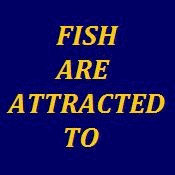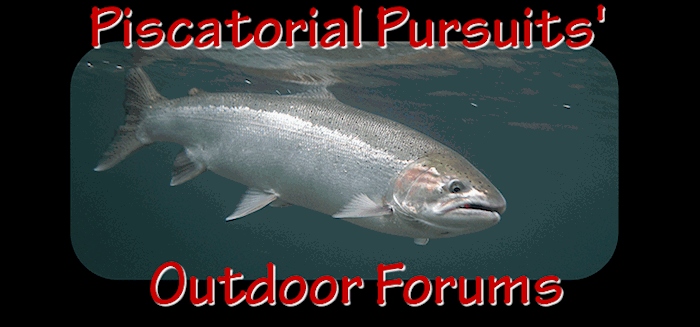Here is a pretty good article about common ground, so to speak..
=============================
Environmentalist tries a new view -- from duck blind
Tom Stienstra
Sunday, December 15, 2002
San Francisco Chronicle
It was dawn at the marsh, where the hunter and the non-hunter were sitting side by side in a duck blind, each wondering what the day would bring.
The air was moist from a low fog, with scarcely a ripple of wind on the surrounding rice pond. A lone curlew sailed overhead. The hunter identified the bird against the dark sky, and admired its flying gifts as it passed. The non-hunter nodded, then cupped her ears to enhance a distant roar from thousands of squawking geese, maybe a mile away, blocked from sight by the dark mist.
"That's a magic sound," said the non-hunter.
"Geese, mostly snows," identified the hunter, "thousands of them, lifting off from the refuge. I love how they do that. When I hear that sound, I know that the day is waking up."
The non-hunter was Carrie Wilson, a marine biologist from Monterey. She is independent, intelligent and successful in her career, a proactive environmentalist. By observation, some might call her a feminist, though like many genuine articles, she doesn't need to shout it from the rooftops.
The hunter was Bob Simms, a master duck hunter and woodsman, who is occasionally hired by duck clubs to set up decoys and blinds and review their operations. On his popular radio show in Sacramento, he is an avid proponent of hunting as the most effective path to conserve wildlife habitat.
"I've never understood the appeal of duck hunting," Wilson said. "I want to see what it's all about. Why do people do this?"
BOTH IN SAME BLIND
To get Wilson and Simms in the same duck blind, Wilderness Unlimited provided access to one of its hunting properties in the Sacramento Valley. Wilderness Unlimited has leased 80 properties covering 300,000 acres in California, then offers limited public access to these lands for hunting, fishing and camping for a fee.
Most of their members are newcomers to the outdoors, and families who want to learn the outdoor skills in high-quality settings where instruction is available. Wilson, the non-hunter who relishes the wildlife experience, and Simms, the avid hunter with a zest for the life he has chosen, were joined by their love of wildlife and shared desires to protect wildlife for future generations.
The day started at 4:15 a.m., with Simms up and alert.
"Did the fog sit down?" he asked, curious and excited. "There were pockets last night so thick you couldn't see 10 feet."
A close look revealed that the fog was hovering about 70 feet above ground, high enough to allow the birds to fly under it, a good sign.
DAWN AT THE MARSH
We met Wilson at 5, and after a short orientation, drove out to the marsh, headlights boring holes in the light mist. We parked, dressed in waders and camouflage, uncased our shotguns and hiked out on a levee trail amid rice ponds to the duck blind, about a 20-minute clomp in darkness.
Wilson explained she spent the night in a small, spartan hunter's cabin, and then awoke with a jolt when the alarm went off.
"It was 4:15 a.m.," Wilson said. "The alarm went off, I got up and said to myself, 'Now what am I supposed to do? What I am doing awake in the middle of the night?' "
Simms laughed. "I've had that feeling a few times myself." As we reached the duck blind, he explained why it was critical to be in position well before dawn.
"What happens," Simms said, "is that the birds will spend all night feeding at the rice fields. At sunrise, they'll leave the rice, get up and fly over to the refuges, then spend the day resting there. So at dawn there is a period when thousands of birds will be in the air, on the move. That is your chance."
The duck blind consisted of a small tub shaped like a rectangle that had been sunken near water level on the edge of a marsh. Decoys had been set on each side of us in the rice ponds. As darkness turned to dawn, the fog layer dropped a bit, reducing visibility to about 100 yards, and Simms started quacking away on his duck calls.
"How many of those things do you have?" Wilson asked.
"Today? I only brought about 15 (including whistles)," Simms answered, then proceeded to explain how each is designed to deliver a slightly varied call for different species of ducks, and how he varies the pitch according to distance and purpose.
THE BIRDS ARRIVE
Right then, a northern harrier sailed overhead, a silhouette in the dawn sky. Simms was excited now, watching the birds. In the next half hour, there were curlew, blue heron, gulls and terns. Then, as Simms described the form of a giant egret in flight, behind him, a golden eagle cruised past, quiet and powerful.
A moment later, a ball of thousands of black birds arrived to the southwest, flying as if connected by telepathy.
"Listen to their wing beats," Wilson said, enjoying Simms' enthusiasm for the scene being played out before us.
"All those wings working at once sound like the whirring of an electric fan, " Simms answered, smiling, realizing that his non-hunting companion shared his love of wildlife.
A moment later, three green-winged teal emerged from the fog and burst over the top of us at about 50 mph. We ducked down, and Simms started calling them. At 100 yards, they banked, turned and returned, heading for the decoys. At 30 yards, we rose and fired with our 12-gauge shotguns. One of the teal fell and was quickly retrieved.
For someone who loves ducks so much, how do you deal with shooting them, Wilson asked Simms.
"I love hunting, start to finish," Simms said. "Taking a bird is part of it.
But it's not as important as some people make it out to be. The whole experience, the walk out to the blind, watching the sunrise, seeing the birds work . . . an occasional shot is no more important than any other element."
TOURING THE REFUGE
Later in the day, we toured the Sacramento National Wildlife Refuge, where there are literally thousands of waterfowl and raptors at every turn. This waterfowl habitat is paid for by hunters, Simms explained, which benefits hundreds of species of birds and other wildlife. "That is why without duck hunters paying for habitat, there would be far fewer wetlands and wildlife of all types."
Wilson agreed with that statement and theorized different ways how non- hunters who love birds and wildlife could also help pay for wildlife habitat.
After having taken part in the full experience, she was surprised it didn't bother her to see a duck shot from the millions that live here. "It isn't warm- and-fuzzy stuff," she said, then added with a laugh. "Actually, it's kind of cold."
Later she said. "It's stunning, really, how many birds are out here and how few are taken by hunters."
With one sweep of the eye, she took in a massive flock of 5,000 snow geese, then gazed with clear appreciation at Simms and his devotion.
"You know, I've known a lot of duck hunters and never really understood what they were about," she said, "But I get it now. After spending the day in this spectacular place, I understand the passions that drive these wacky people who love waterfowl." .












 Previous Topic
Previous Topic Index
Index


